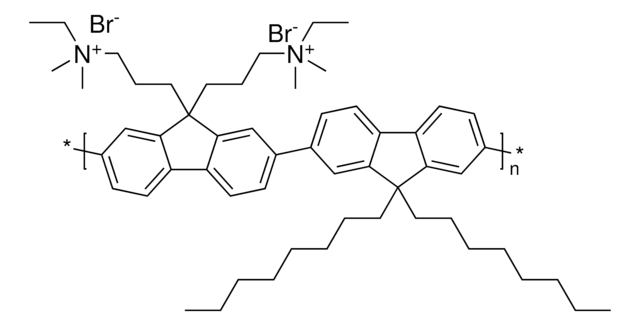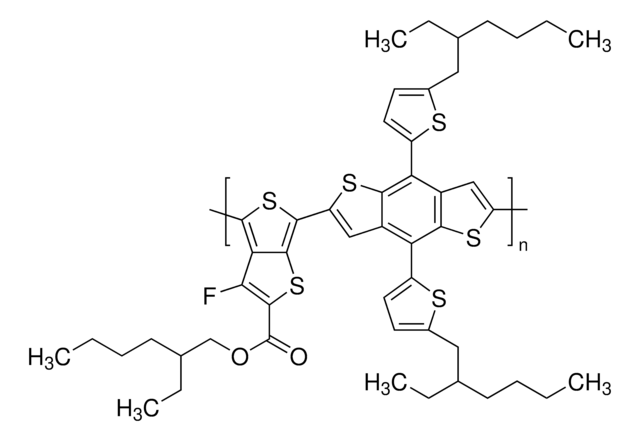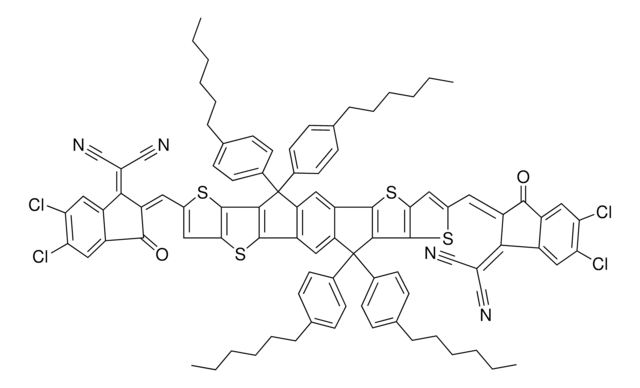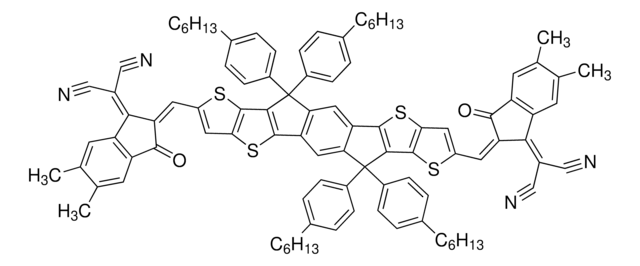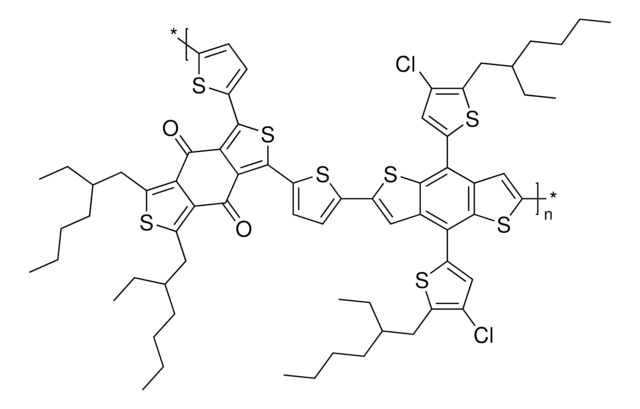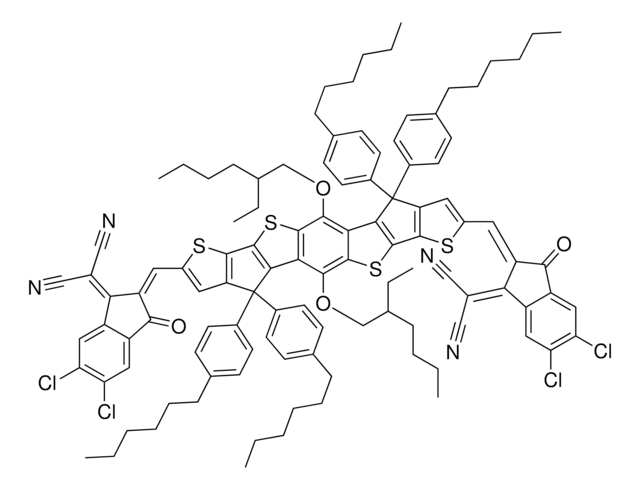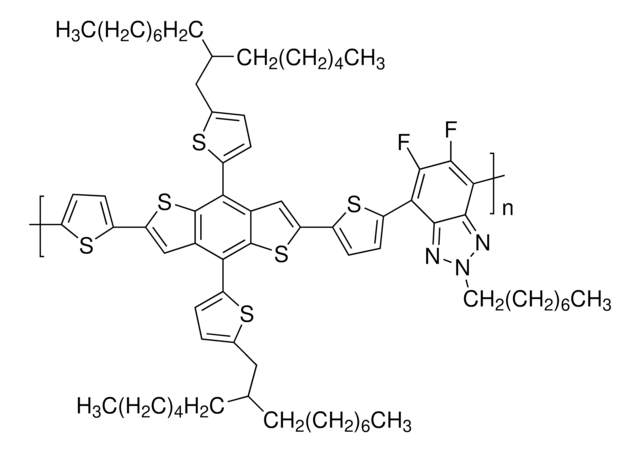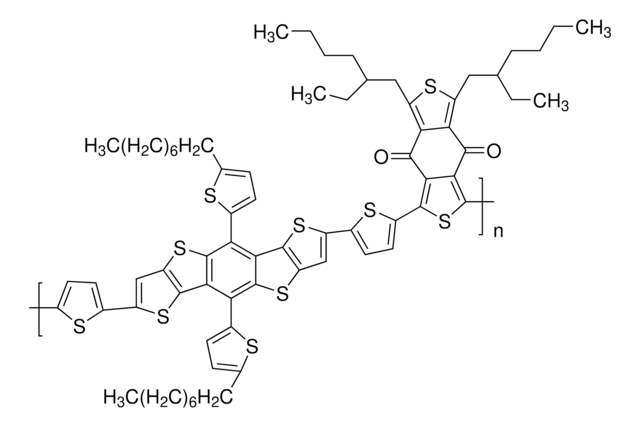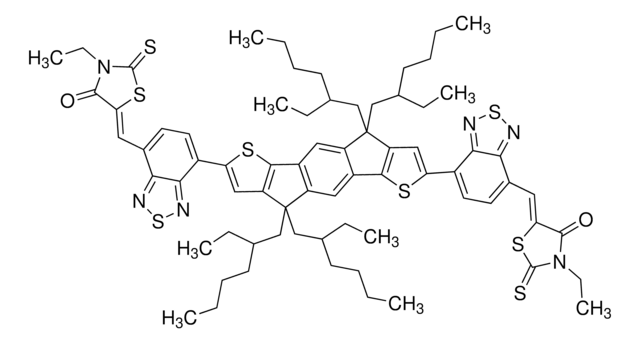901423
ITIC-F
Sinonimo/i:
9-Bis(2-methylene-((3-(1,1-dicyanomethylene)-6,7-difluoro)-indanone))-5,5,11,11-tetrakis(4-hexylphenyl)-dithieno[2,3-d:2’,3’-d’]-s-indaceno[1,2-b:5,6-b’]dithiophene, IT-4F, ITIC-2F, ITIC-DF3
About This Item
Prodotti consigliati
Descrizione
Band gap: 1.52 eV
Livello qualitativo
Saggio
97%
Stato
solid
Energia dell’orbitale
HOMO -5.66 eV
LUMO -4.14 eV
Stringa SMILE
Fc1cc2c(cc1F)C(=C(C#N)C#N)\C(=C\c3[s]c4c([s]c5c4C(c8c5cc9c(c8)c%10[s]c%11c([s]c(c%11)\C=C%14/C(=O)c%15c(cc(c(c%15)F)F)C/%14=C(C#N)C#N)c%10C9(c%13ccc(cc%13)CCCCCC)c%12ccc(cc%12)CCCCCC)(c7ccc(cc7)CCCCCC)c6ccc(cc6)CCCCCC)c3)\C2=O
InChI
1S/C94H78F4N4O2S4/c1-5-9-13-17-21-55-25-33-61(34-26-55)93(62-35-27-56(28-36-62)22-18-14-10-6-2)75-45-72-76(46-71(75)89-85(93)91-81(107-89)43-65(105-91)41-73-83(59(51-99)52-100)67-47-77(95)79(97)49-69(67)87(73)103)94(63-37-29-57(30-38-63)23-19-15-11-7-3,64
JOZQXSUYCMNTCH-ODDCUFEPSA-N
Applicazioni
Codice della classe di stoccaggio
11 - Combustible Solids
Classe di pericolosità dell'acqua (WGK)
WGK 3
Punto d’infiammabilità (°F)
Not applicable
Punto d’infiammabilità (°C)
Not applicable
Scegli una delle versioni più recenti:
Certificati d'analisi (COA)
Non trovi la versione di tuo interesse?
Se hai bisogno di una versione specifica, puoi cercare il certificato tramite il numero di lotto.
Possiedi già questo prodotto?
I documenti relativi ai prodotti acquistati recentemente sono disponibili nell’Archivio dei documenti.
I clienti hanno visto anche
Articoli
The emerging organic photovoltaic (OPV) technology is very promising for low-cost solar energy production. OPV devices can be produced using high-throughput, large-volume printing methods on lightweight and flexible plastic substrates, making them easy to deploy and use in innovative ways.
The emerging organic photovoltaic (OPV) technology is very promising for low-cost solar energy production.
Professor Chen (Nankai University, China) and his team explain the strategies behind their recent record-breaking organic solar cells, reaching a power conversion efficiency of 17.3%.
Il team dei nostri ricercatori vanta grande esperienza in tutte le aree della ricerca quali Life Science, scienza dei materiali, sintesi chimica, cromatografia, discipline analitiche, ecc..
Contatta l'Assistenza Tecnica.
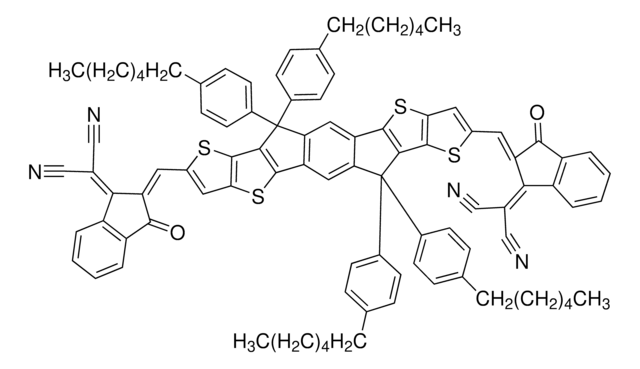

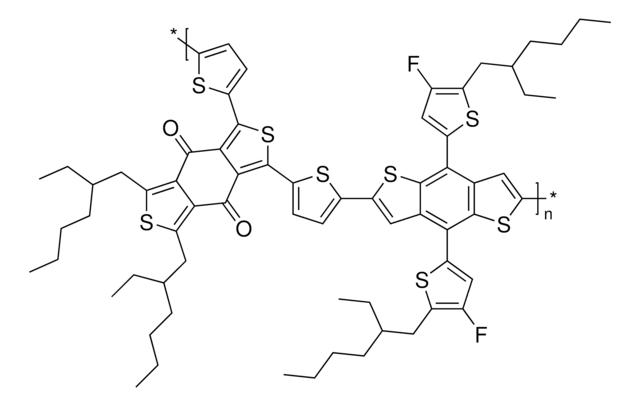
![[6,6]-Phenyl C71 butyric acid methyl ester 99%](/deepweb/assets/sigmaaldrich/product/structures/716/624/9fb9f2f0-ae99-429f-8d3a-b12267976a4d/640/9fb9f2f0-ae99-429f-8d3a-b12267976a4d.png)
![[6,6]-Phenyl C61 butyric acid methyl ester ≥99%](/deepweb/assets/sigmaaldrich/product/structures/359/221/d990c746-0960-4c69-bf76-fe09b193824d/640/d990c746-0960-4c69-bf76-fe09b193824d.png)
